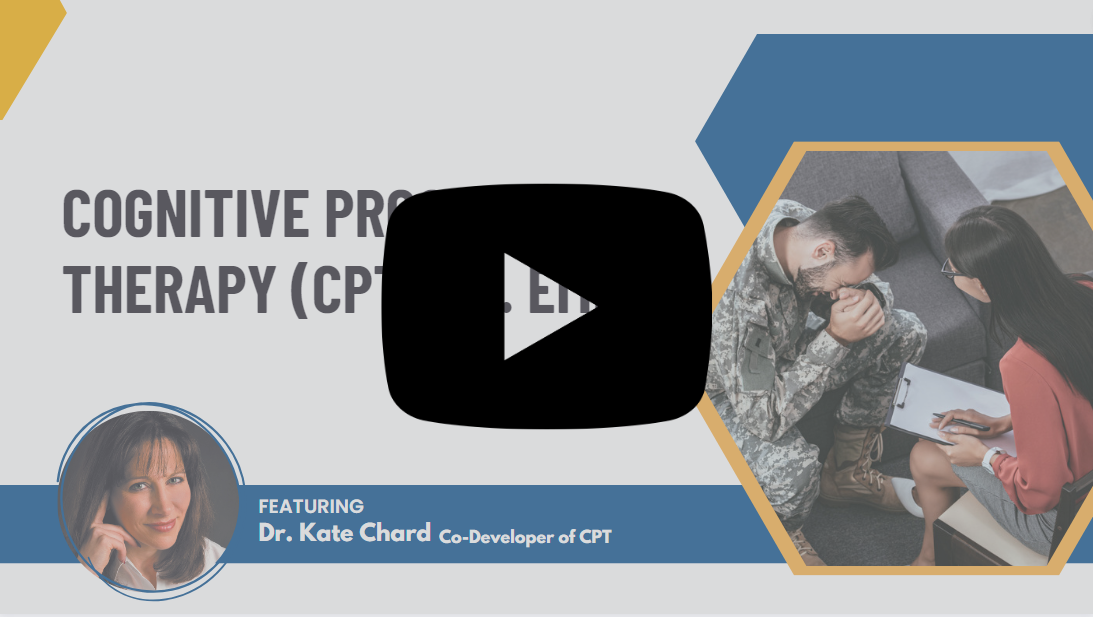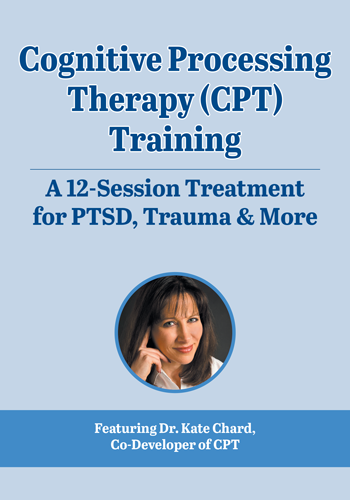Navigating Trauma Recovery: A Comparative Analysis of Cognitive Processing Therapy (CPT) and Eye Movement Desensitization and Reprocessing (EMDR)
Free infographic to educate your clients on the differences between Cognitive Processing Therapy (CPT) and Eye Movement Desensitization and Reprocessing (EMDR)

In the realm of evidence-based therapeutic approaches for trauma treatment, two modalities have garnered significant attention: Cognitive Processing Therapy (CPT) and Eye Movement Desensitization and Reprocessing (EMDR). Both techniques share a common goal of helping individuals overcome the effects of trauma, yet they offer distinct pathways to achieve healing and resolution
In this comprehensive analysis, we delve into the unique features of CPT and EMDR, shedding light on their respective strengths and their roles in guiding individuals towards a journey of recovery. You can also download this free infographic that gives you a breakdown on the differences between CPT vs EMDR.
Theoretical Foundations
Cognitive Processing Therapy (CPT) derives its framework from cognitive theory, focusing on challenging and restructuring maladaptive beliefs connected to traumatic experiences. By reframing these beliefs, CPT aims to alleviate emotional distress and facilitate the processing of trauma.Eye Movement Desensitization and Reprocessing (EMDR) integrates elements from cognitive, behavioral, and psychodynamic therapies. The technique employs bilateral stimulation, such as eye movements, taps, or sounds, to facilitate the reprocessing and integration of traumatic experiences.
Core Treatment Goals
CPT's primary focus lies in treating trauma-related conditions, particularly post-traumatic stress disorder (PTSD). Its core objectives involve reframing traumatic beliefs, reducing emotional distress, and creating mental flexibility.EMDR also targets trauma treatment, aiming to process distressing memories and emotions related to traumatic experiences. The therapy seeks to reduce the emotional intensity of traumatic memories and integrate them into a more adaptive perspective.
Approach to Trauma Treatment
CPT primarily employs cognitive restructuring to challenge and modify negative thought patterns related to trauma. The therapy provides a structured framework for clients to revisit and process their traumatic experiences.EMDR, in contrast, utilizes bilateral stimulation techniques to facilitate trauma processing. During therapy sessions, clients follow therapist-directed eye movements or other forms of bilateral stimulation to aid in reprocessing traumatic memories.
Emphasis on Emotional Processing
Both CPT and EMDR emphasize emotional processing related to traumatic experiences. CPT encourages clients to explore and process their emotions in a supportive environment, fostering integration and acceptance. Similarly, EMDR seeks to desensitize and reprocess distressing emotions associated with trauma, aided by bilateral stimulation.Versatility and Range of Applications
CPT is designed specifically for trauma-related conditions and is most effective in trauma-focused care, particularly for PTSD and trauma-related challenges.EMDR, while primarily utilized for trauma treatment, including PTSD, can also address other distressing life experiences and negative memories. Its versatility extends to treating issues beyond trauma, making it an adaptable therapeutic approach.
Collaborative Approach
Both CPT and EMDR prioritize collaboration between therapists and clients, creating a safe and supportive space for trauma processing. This collaborative nature empowers clients to actively engage in their healing journey and work towards resolution.Timeframe and Long-Term Outcomes
CPT typically follows a structured treatment plan focused on trauma processing and resolution. Its primary goal is to foster long-term emotional well-being and alleviate trauma-related symptoms.EMDR can vary in duration depending on the complexity of trauma and individual needs. Its long-term outcomes include desensitizing traumatic memories and promoting adaptive integration for emotional healing.
Conclusion
Cognitive Processing Therapy (CPT) and Eye Movement Desensitization and Reprocessing (EMDR) present distinctive approaches to trauma treatment. While both therapies share the common goal of processing traumatic memories and emotions, they differ in their theoretical foundations and therapeutic techniques. Understanding the unique strengths of each approach equips therapists to tailor treatments to the specific needs of their clients, guiding them towards a path of healing, resilience, and emotional well-being.Download this free infographic to help clients understand the differences between Cognitive Processing Therapy (CPT) and Eye Movement Desensitization and Reprocessing (EMDR).
Want to hear directly from the co-developer of CPT?

Dr. Kate Chard walks you step-by-step through the differences between Cognitive Processing Therapy (CPT) and Eye Movement Desensitization and Reprocessing (EMDR) therapies and their effectiveness on trauma.
Want training that can help you heal PTSD in just 12 therapy sessions?

For the first time ever, Dr. Kate Chard, PhD and co-developer of Cognitive Processing Therapy, has recorded her official 2-day training – the one she has taught to thousands of clinicians internationally and at the US Department of Veterans Affairs – in a convenient on-demand format. Through this training, you'll discover a new way to treat trauma that gets started in the very first session.
Register today, and you’ll not only get LIVE Q&A calls with Dr. Kate Chard but also a copy of the Cognitive Processing Therapy Treatment Manual, FREE!
Register today, and you’ll not only get LIVE Q&A calls with Dr. Kate Chard but also a copy of the Cognitive Processing Therapy Treatment Manual, FREE!
Meet the Expert:
Kate M. Chard, PhD, is a co-developer of CPT and director of the Trauma Recovery Center at the Cincinnati VA Medical Center. Serving as the VA CPT Implementation Director, Dr. Chard oversees the dissemination of CPT to mental health clinicians across the United States. She is the co-author of Cognitive Processing Therapy for PTSD: A Comprehensive Model (The Guilford Press, 2017) and author of CPT for Sexual Abuse Treatment Manual (2012).
Learn more about her educational products, including upcoming live seminars, by clicking here.
Learn more about her educational products, including upcoming live seminars, by clicking here.






